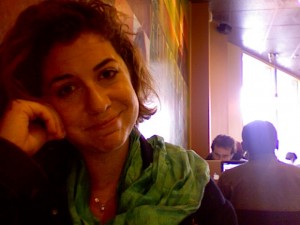
The University of Southern California (USC) is well known for football, and all of the glory and scandal that comes with it. Some folks also associate USC with privilege and derisively refer to it as the “University of Spoiled Children.”
But USC knows, as I have learned well, that you can’t just rest on your laurels.* We must look to the future.
The Strategic Vision identifies three paths forward, which constitute the heart of our academic vision.
Transforming Education for a Rapidly Changing World highlights building the ranks of transformative faculty and reinventing education at the undergraduate, graduate and postdoctoral levels. It also focuses on the need to insure student access to education and our commitment to accountability.
Creating Scholarship with Consequence emphasizes the growing importance of translational research, creative work and professional practice that make a significant impact on society. This will require increasingly more interdisciplinary and inter-professional collaboration.
Connecting the Individual to the World calls for promoting local and global engagement to foster mutual understanding. This begins with self-knowledge and self-reflection, critical thought, appreciation of diversity, aesthetic sensibility, civility, and empathy across all spheres of life. Given the broad scope and depth of our academic programs, we must not lose sight of the importance of cultivating human wholeness.
-Elizabeth Garrett, USC Provost and Senior Vice President for Academic Affairs, 1/9/12
These values echo my own and if I were more jingoistic, I might be inclined to say something like “I am USC.”
My latest inspiration for my dissertation reflects this commitment to transformative education, meaningful contribution, and human wholeness. It incorporates positive deviance, participatory action research, participatory design, participatory culture, participatory learning, serious games, and social and emotional competence.
Project Plan:
1. Gather baseline data on a youth population (utilize multiple methods to triangulate members’ capacity to emotionally regulate and perform in Dojo).
2. Identify positive deviants (PD’s), or those whose adeptness at emotional regulation qualifies as aberrational; in other words, individuals who thrive despite the odds, without access to special resources.
3. Identify their emotional regulation strategies — How do they do what they do?
4. Work with these PD’s to suggest game design modifications and curriculum components for Dojo.
5. Liaise with GameDesk developers regarding game design modifications and take lead on realizing complementary curriculum.
6. Facilitate outreach efforts with PD’s and other interested youths, spreading the word about Dojo and PD’s emotional regulation strategies.
7. Gather endline data on youth population (utilize multiple methods to triangulate members’ capacity to emotionally regulate and perform in Dojo).
Of course, this plan is ambitious and will undergo intensive revision — part of the process. For now, this is the blue sky I’m eyeballing.
Fight on.
*Pun absolutely intended.


